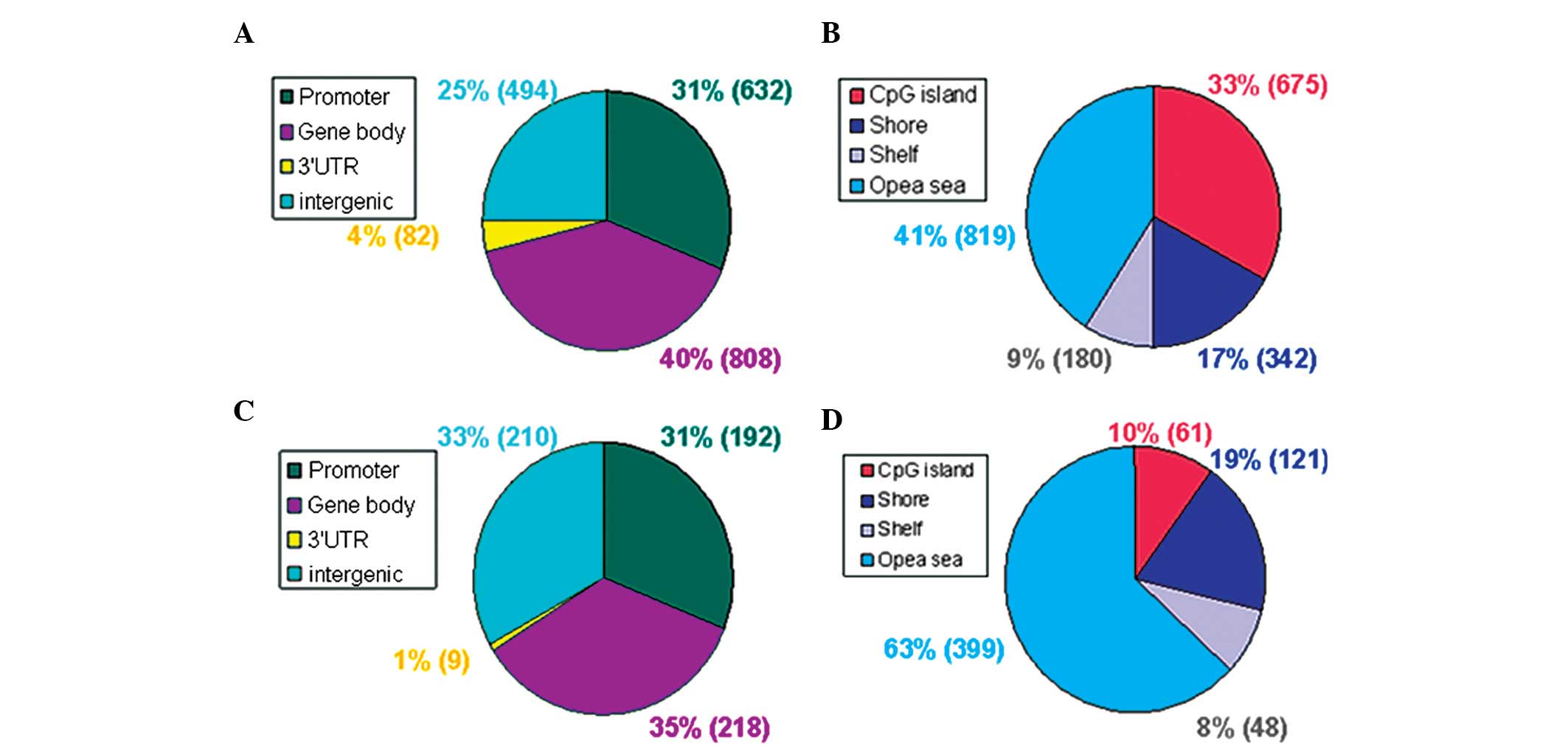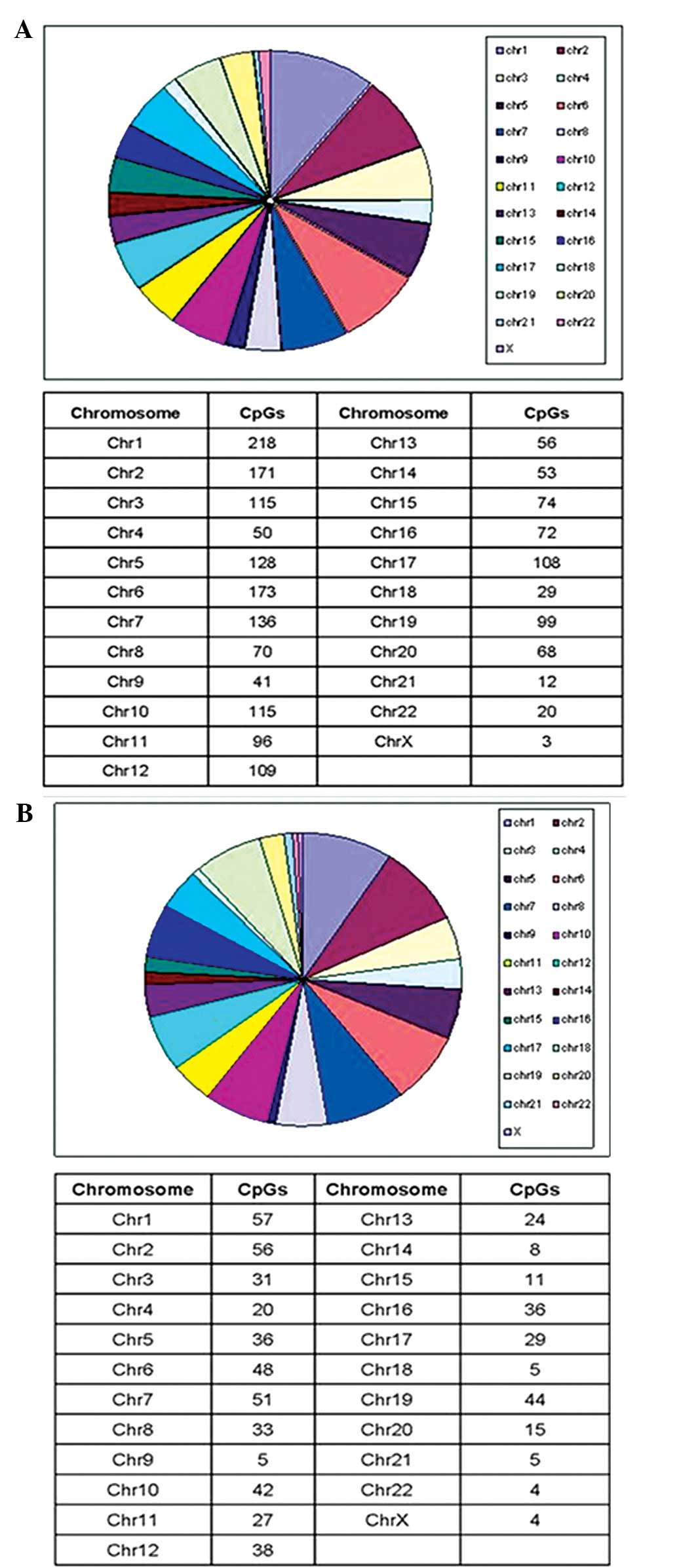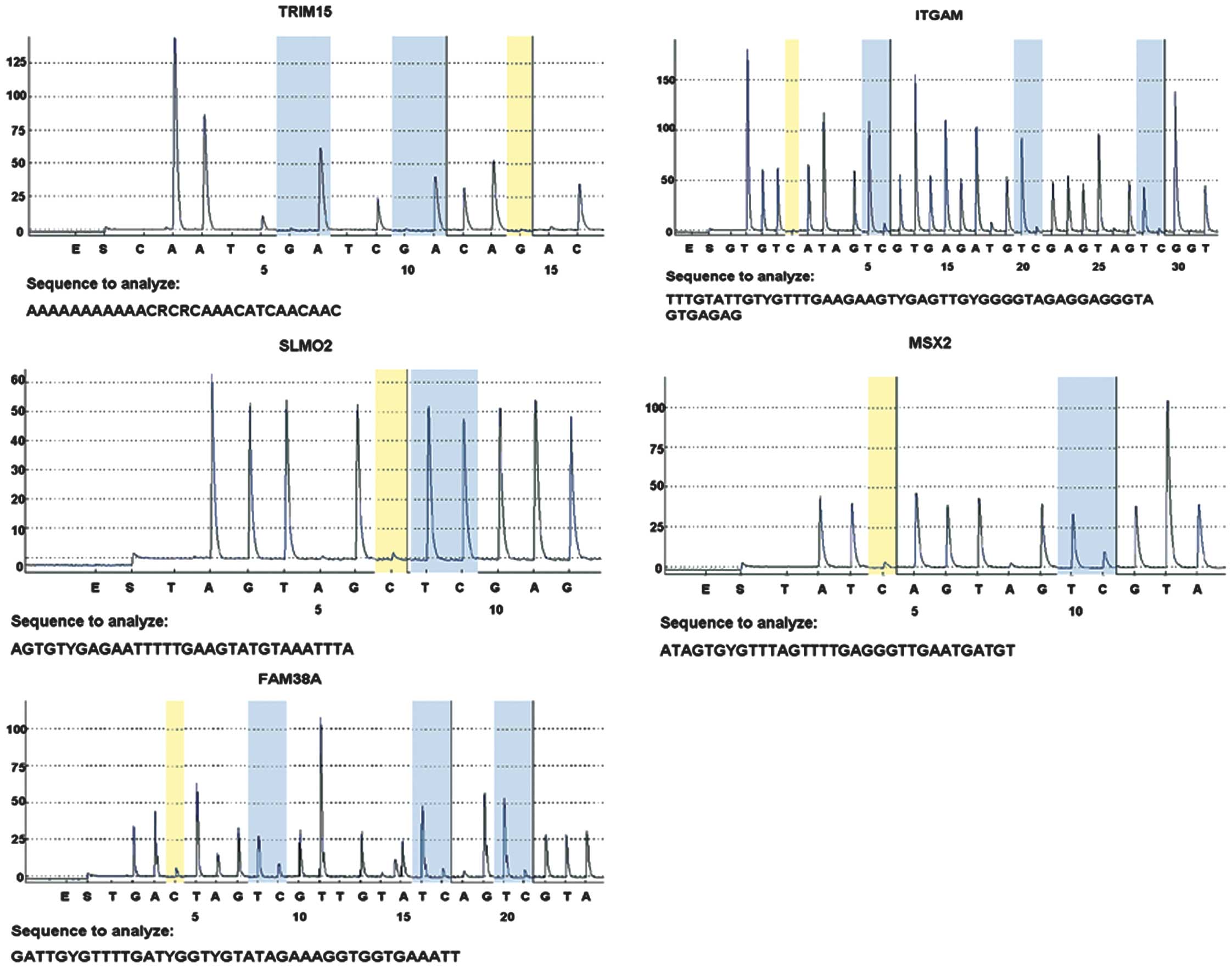Analysis of DNA methylation patterns associated with the gastric cancer genome
- Authors:
- Yi Cheng
- Zhi Yan
- Yin Liu
- Chengbai Liang
- Hong Xia
- Junming Feng
- Guorong Zheng
- Hesheng Luo
-
View Affiliations
Affiliations: Department of Gastroenterology, Remin Hospital of Wuhan University, Wuhan, Hubei 430060, P.R. China, Department of Gastroenterology, Wuhan General Hospital of Guangzhou Command, Wuhan, Hubei 430070, P.R. China, Department of Pathology, Wuhan General Hospital of Guangzhou Command, Wuhan, Hubei 430070, P.R. China
- Published online on: January 29, 2014 https://doi.org/10.3892/ol.2014.1838
-
Pages:
1021-1026
Metrics:
Total
Views: 0 (Spandidos Publications: | PMC Statistics:
)
Metrics:
Total PDF Downloads: 0 (Spandidos Publications: | PMC Statistics:
)
This article is mentioned in:
Abstract
The objective of the current study was to investigate the characteristics of DNA methylation patterns associated with the gastric cancer genome and to identify clinically useful diagnostic markers and therapeutic targets for gastric cancer. The Infinium 450K methylation microarray was used to compare differential DNA methylation sites of gastric cancer tissue with that of normal gastric tissue. The results of the DNA microarray analysis were confirmed by pyrosequencing. Functional analysis of the differential genes was performed using the GO software. The effect of candidate site methylation on gene expression was monitored using quantitative polymerase chain reaction analysis. Of the 2,645 differential methylation sites identified in gastric cancer tissues, 2,016 were hypermethylated sites, 629 were hypomethylated sites, 826 were located in promoter regions and 1,024 were located within genes. These differential sites were associated with 1,352 genes. In total, five sites were selected and pyrosequencing verified the results of the microarray analysis in five of the sites. Change in gastric cancer DNA methylation pattern was a common occurrence. Differential methylation sites appeared more often in non‑promoter regions. The associated genes were involved in multiple signaling pathways, and hypermethylated and hypomethylated sites were involved in roughly the same signaling pathways. Methylation of the genome promoted gene expression. TRIM15, ITGAM, MSX2 and FAM38A may be candidate genes for diagnosing gastric cancer.
View References
|
1
|
Leung WK, Wu MS, Kakugawa Y, et al; Asia
Pacific Working Group on Gastric Cancer. Screening for gastric
cancer in Asia: current evidence and practice. Lancet Oncol.
9:279–287. 2008. View Article : Google Scholar : PubMed/NCBI
|
|
2
|
Brenner H, Rothenbacher D and Arndt V:
Epidemiology of stomach cancer. Methods Mol Biol. 472:467–477.
2009. View Article : Google Scholar
|
|
3
|
Sapari NS, Loh M, Vaithilingam A and Soong
R: Clinical potential of DNA methylation in gastric cancer: a
meta-analysis. PLoS One. 7:e362752012. View Article : Google Scholar : PubMed/NCBI
|
|
4
|
Laird PW: Principles and challenges of
genomewide DNA methylation analysis. Nat Rev Genet. 11:191–203.
2010. View
Article : Google Scholar : PubMed/NCBI
|
|
5
|
Ku CS, Naidoo N, Wu M and Soong R:
Studying the epigenome using next generation sequencing. J Med
Genet. 48:721–730. 2011. View Article : Google Scholar : PubMed/NCBI
|
|
6
|
Shenker N and Flanagan JM: Intragenic DNA
methylation: implication of this epigenetic mechanism for cancer
research. Br J Cancer. 106:248–253. 2012. View Article : Google Scholar
|
|
7
|
Lister R, Pelizzola M, Dowen RH, et al:
Human DNA methylomes at base resolution show widespread epigenomic
differences. Nature. 462:315–322. 2009. View Article : Google Scholar : PubMed/NCBI
|
|
8
|
Sandoval J, Heyn HA, Moran S, et al:
Validation of a DNA methylation microarray for 450,000 CpG sites in
the human genome. Epigenomics. 6:692–702. 2011.PubMed/NCBI
|
|
9
|
Dedeurwaerder S, Defrance M, Calonne E, et
al: Evaluation of the Infinium Methylation 450K technology.
Epigenetics. 3:771–784. 2011.PubMed/NCBI
|
|
10
|
Rakyan VK, Down TA, Balding DJ and Beck S:
Epigenome-wide association studies for common human diseases. Nat
Rev Genet. 12:529–541. 2011. View
Article : Google Scholar : PubMed/NCBI
|
|
11
|
Maunakea AK, Nagarajan RP, Bilenky M, et
al: Conserved role of intragenic DNA methylation in regulating
alternative promoters. Nature. 466:253–257. 2010. View Article : Google Scholar
|
|
12
|
Ball MP, Li JB, Gao Y, et al: Targeted and
genome-scale strategies reveal gene-body methylation signatures in
human cells. Nat Biotechnol. 27:361–368. 2009. View Article : Google Scholar : PubMed/NCBI
|
|
13
|
Jjingo D, Conley AB, Yi S, et al: On the
presence and role of human gene-body DNA methylation. Oncotarget.
3:462–474. 2012.PubMed/NCBI
|













